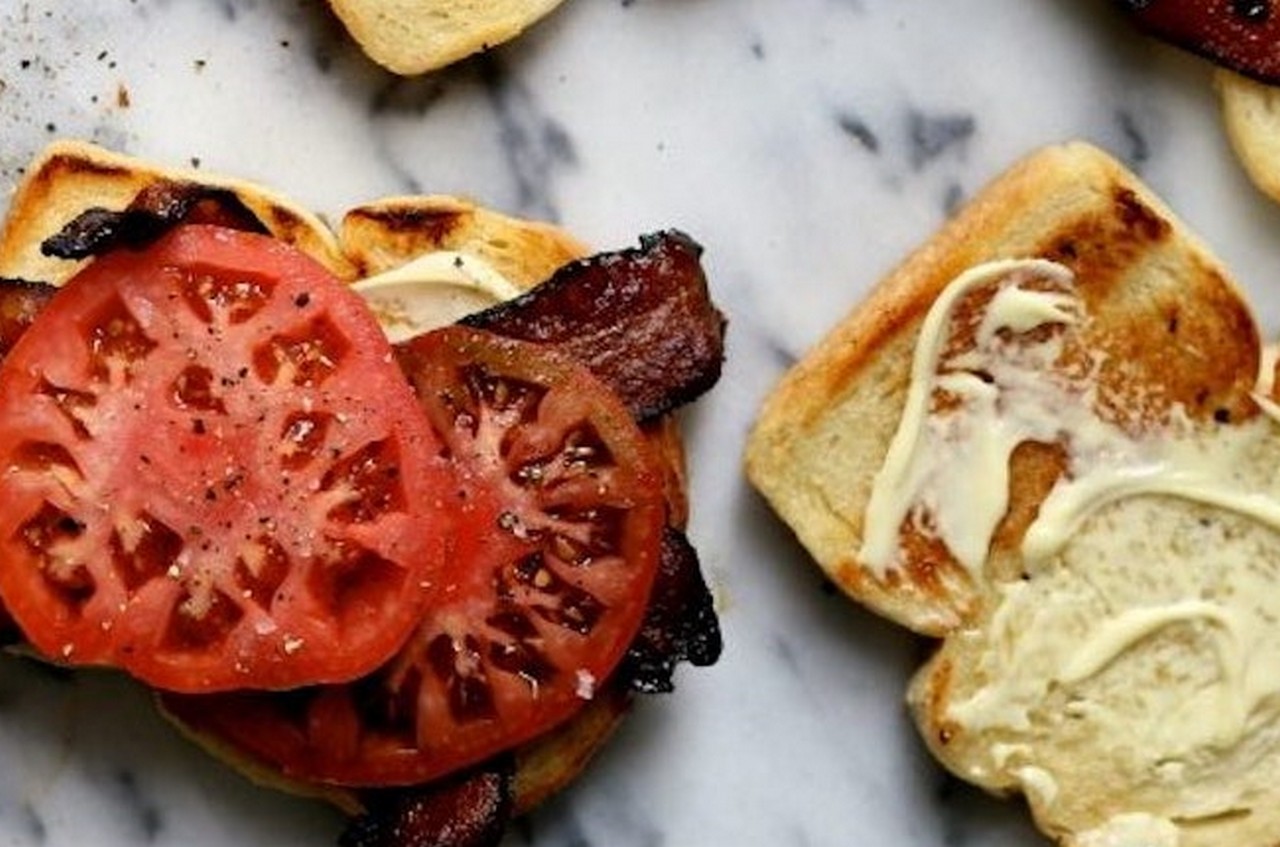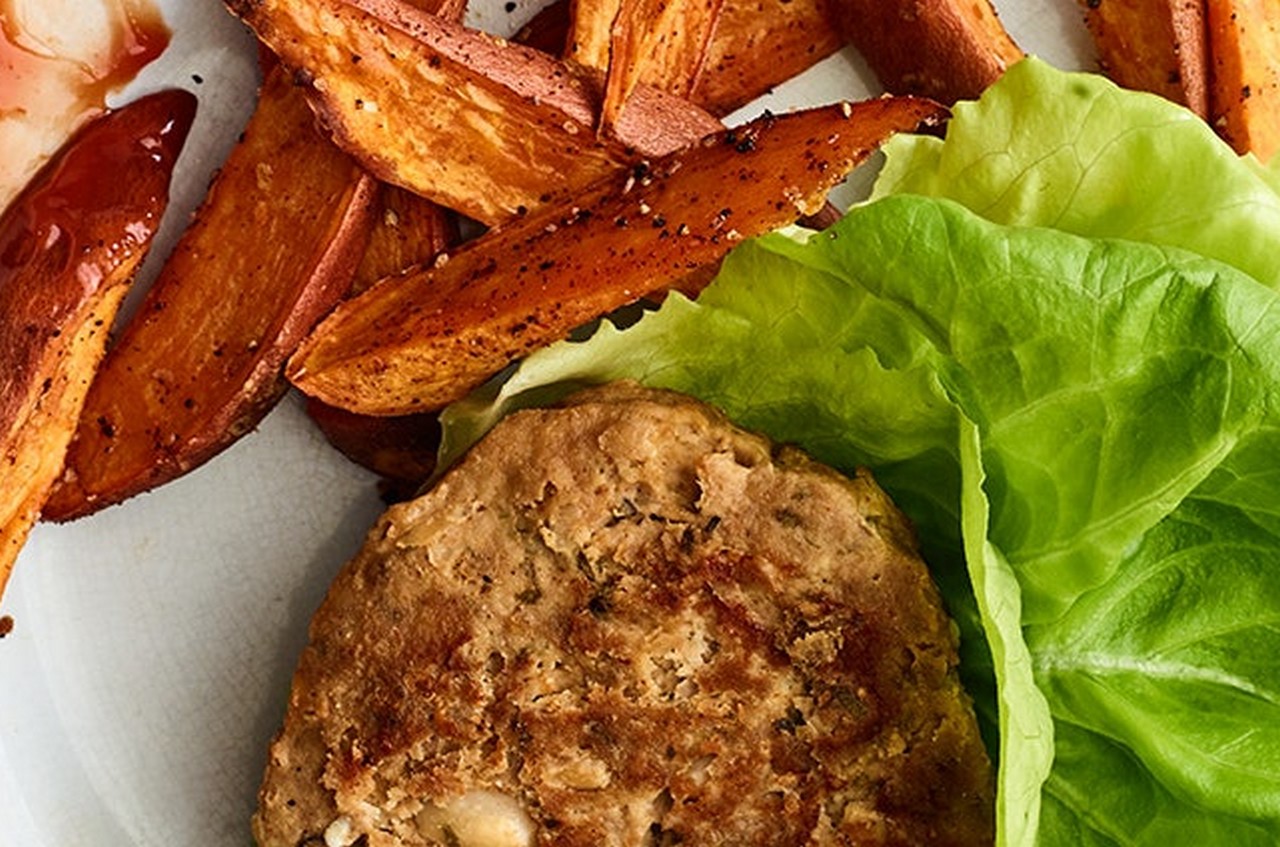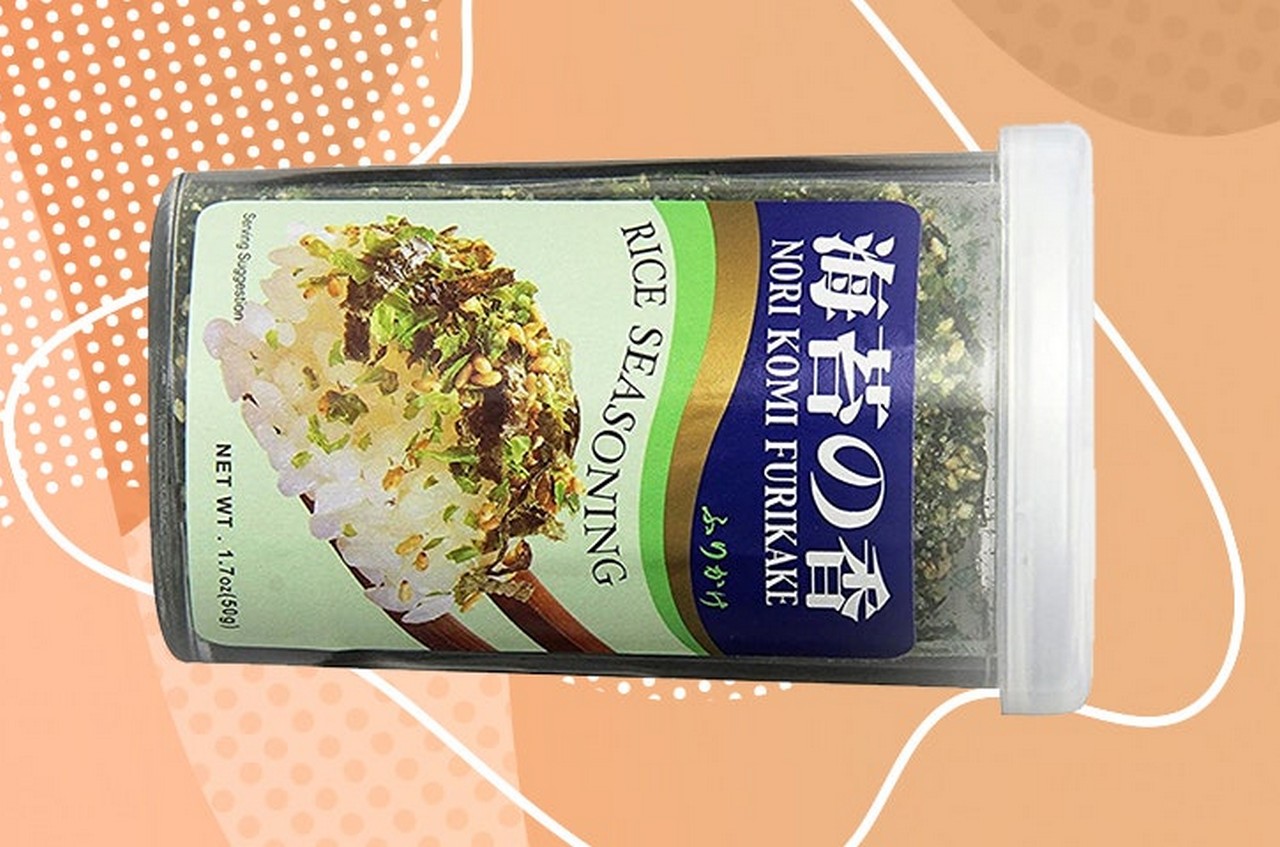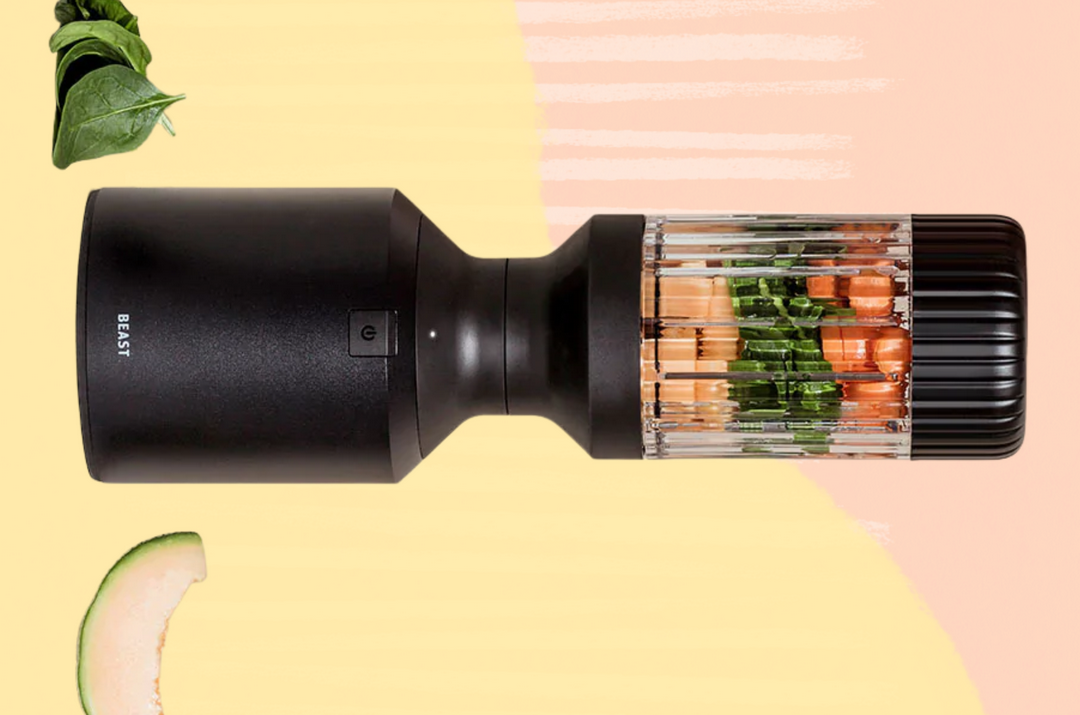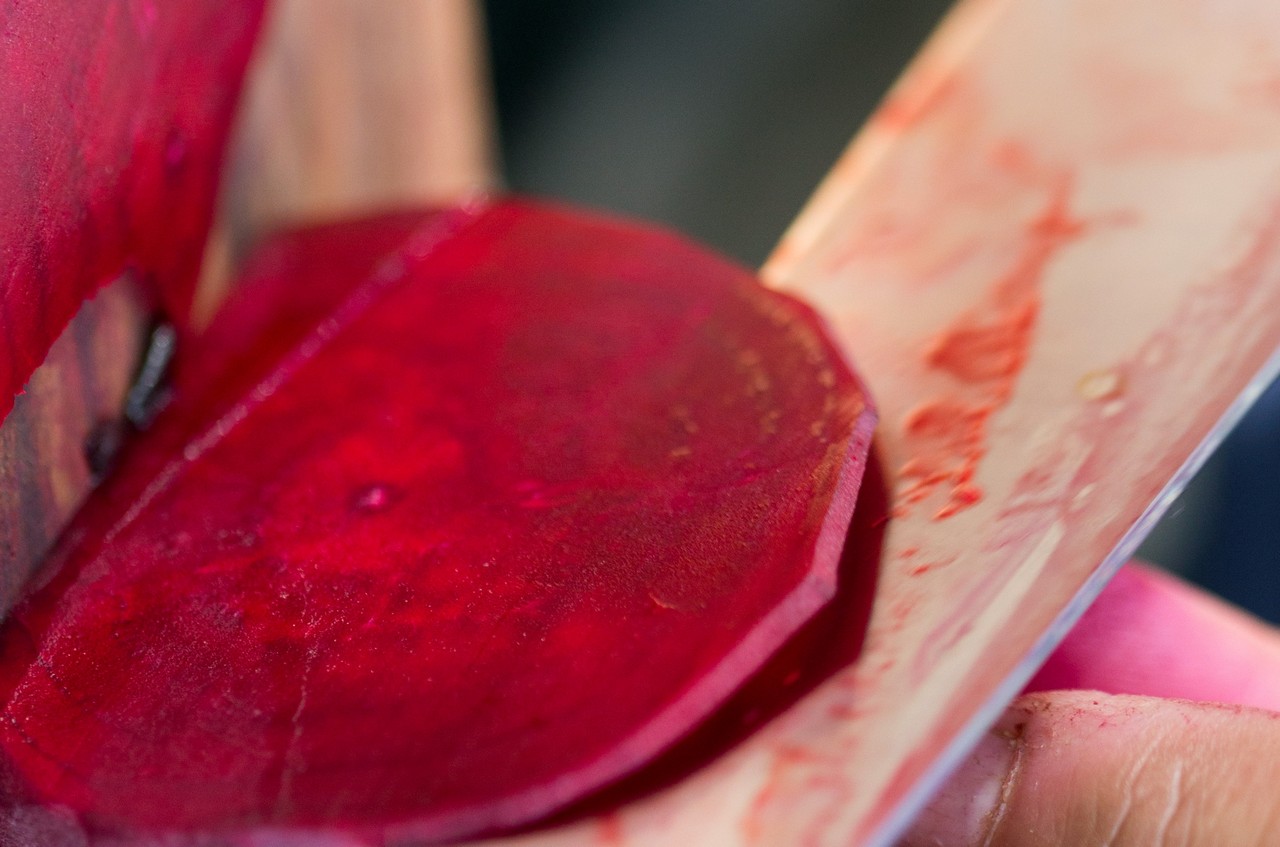
Every time I cook with beets, my kitchen ends up looking like a crime scene. Despite my best efforts, hot pink beet juice somehow winds up absolutely everywhere—all over the counter and the cutting boards, on the floor, and in some seriously random spots like the microwave and the fridge. And of course it’ll be all over my face, hands, and clothes, too. There’s really no hiding it when I’ve made something with beets.
I’ve often found myself wondering if there’s a way to keep the mess at bay, or if it’s just one of the facts of life. So I asked a couple of cooking experts who frequently work with large quantities of the vegetable to find out if they have any secrets. I figured if anyone would know how to make something with beets without staining everything in plain sight, it’d be them.
They told me that while there’s no way to totally avoid the mess, there are a handful of things you can do to minimize it. Here, I test the beet-making methods and tricks that experts say will keep your kitchen the tidiest.
If you really don’t want to deal with a mess, you can use a different beet variety.
Though red beets are the most common variety, many other types don’t contain betalains, the pigments responsible for their bright pink color, Matt Aita, executive chef at The Little Beet Table in New York City, tells SELF. He says that if you want to avoid the stains, you can simply use other options like chioggia beets (which have a candy-striped interior), golden beets, or white beets. These varieties are commonly available at farmer’s markets and stores like Whole Foods Market. And though they all taste slightly different, they share a similar earthy flavor.
If red beets are your only option, a few simple supplies can help contain the mess.
Aita says you need to prep yourself before you even consider prepping the beets. Wearing gloves and an apron are the only ways to really guarantee that you won’t walk away with stained hands and clothes. And if you want to avoid a stained cutting board, set a piece of parchment paper on top of it before you begin slicing, Manuel Trevino, corporate executive chef at by CHLOE, tells SELF.
And don’t peel the beets until after you’ve cooked them—it’s much easier that way.
If you’ve ever tried to peel a raw beet, you probably know how strenuous and messy it can be. That’s why you should always wait until it’s cooked, when the beet is fork-tender and the skin slides right off, Trevino explains. And when you do finally peel the beets, he says that you should do it over the sink. That way, he says, “any mess will get washed down the drain.”
There are also a couple different ways to cook beets that will minimize the mess. The first requires a bunch of salt.
Aita’s favorite (and least messy) way to make beets is to roast them under a thick layer of salt. The salt draws out moisture, which will reduce the amount of juice, he explains. To do it, you’ll need about a pound of kosher salt for every pound of beets you use. Mix the salt with one to two egg whites until it’s wet enough to form around the beets. (Add egg whites as necessary.) Wash and dry your beets, place them in a baking dish, and cover them in salt. Bake at 425 degrees for an hour until the salt has started to brown all over. Let them rest until they’re cool enough to handle, then crack open the salt like a piñata and remove your perfectly cooked beets.
I found this method totally worth Aita’s hype. The salt pulled out most of the excess juice, so the beet was easy to handle, and it only stained my hands a little bit. Plus, it was super flavorful inside and out thanks to that thick layer of salt. I ate it plain, but you could easily use a beet prepared this way in any dish you like. To be honest, I think it’s the only way I’m going to cook beets from now on.
The second method calls for aluminum foil, olive oil, and herbs.
Trevino likes to roast beets with olive oil and herbs in individual foil packets. The foil packets capture the juice as it’s released, so all you have to do is remove the beet when it’s finished cooking and toss the juice-filled foil before it has a chance to stain anything.
To do it, wash and dry your beets, then massage them with a bit of olive oil (about a teaspoon per beet) plus herbs like thyme and salt. Wrap each beet individually with foil and roast at 425 degrees until fork-tender, about 30 minutes for a medium-sized beet or 45 minutes to an hour for a large beet. Remove from the oven, let cool, and use them however you like. Though I found this method produced beets that were less flavorful and a bit juicier, the foil-pack trick still helped me cut down on my usual beet mess.

